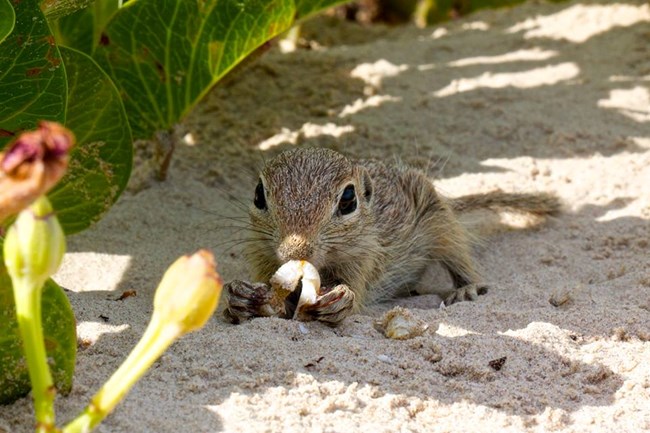
Photo by Kyle Christensen The most commonly seen mammals at the National Seashore are coyotes, spotted ground squirrel, kangaroo rats, and deer, others, such are opossum and raccoon are seldom seen, and a few, such as badgers and bobcats, are rarely encountered. The following information highlights the more commonly-occuring mammals in the park.
The spotted ground squirrel is frequently seen scurrying in the dunes around the Malaquite Visitor Center. This familiar dune inhabitant is found throughout much of West Texas but prefers to live in dry, sandy areas. The ground squirrel makes its home in long, shallow burrows which are marked by slight mounds in the vegetation. The average squirrel weighs 3 to 4.5 ounces and is just 9 inches in length, including the tail and can be identified by the scattered white spots on its back. Little is known about mating and rearing of young in this secretive animal. Mating season begins in February and continues into July with 1 to 2 litters reared each year. Generally, the squirrel does not venture far from its burrow in search of food and its diet includes green plants, sunflower petals, seeds and insects.
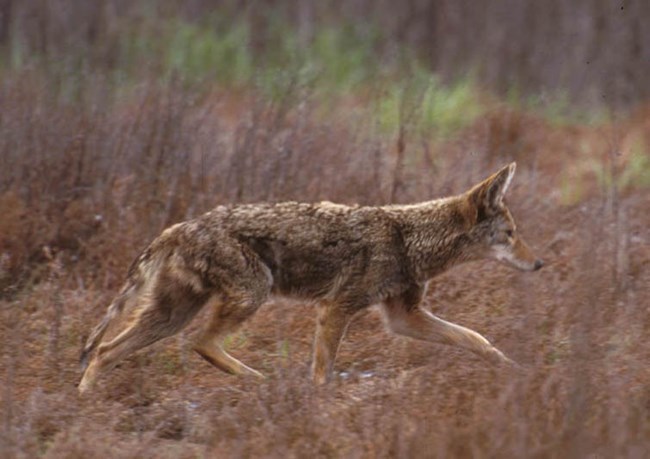
USFWS photo The coyote is a doglike mammal commonly seen at night or early morning and might be sighted crossing the road or searching the beach for food. Coyotes do not run in packs, but will search for food in family groups or cooperate with other adults to hunt large game. A true scavenger, the coyote will eat rabbits, rodents, carrion, garbage, snakes, fruit, insects, frogs and small domestic animals. The coyote prefers to den in sunny banks and hillsides and will enlarge dens of other animals. Mating occurs January to May and 5 to 6 young are born about 2 months later. Juveniles are hard to distinguish from adults by October or November. The average coyote is 41 to 52 inches and weighs 20 to 50 pounds.
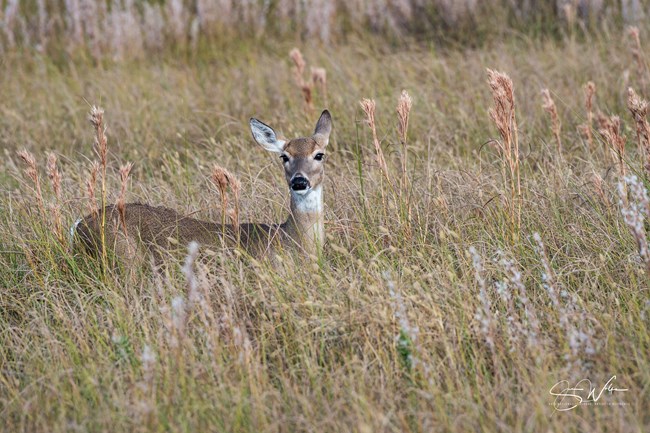
Photo by Artist-in-Residence Sue Wolfe. The size of a small dog, the raccoon has a length of 18 to 28 inches and weighs 12 to 35 pounds. This mammal is easily recognized by its black eye mask and the alternating black and yellowish rings on it tail. This carnivore is active at night and forages for insects, snakes, frogs, fish, birds, nuts and fruit, and garbage. The home range of the raccoon is 1 to 2 square miles and includes a body of water in which it washes its food. There are 2 to 7 young born in April or May and are cared for by the mother until the fall or the following spring. 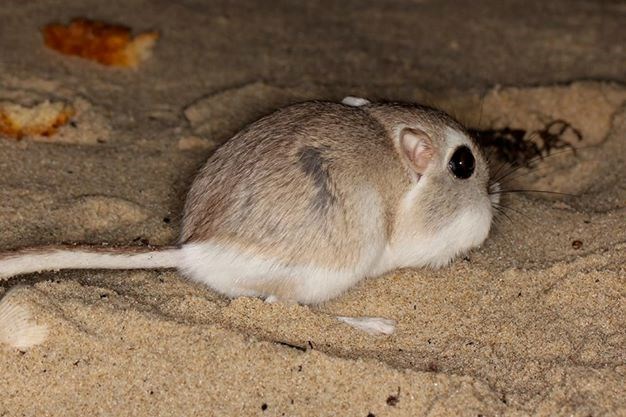
Photo by Kyle Christensen 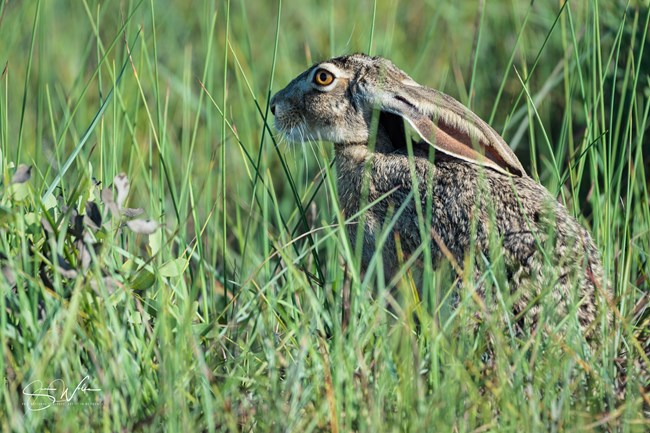
Photo by Artist-in-Residence Sue Wolfe. The black-tailed jackrabbit is a large, long-eared hare, who prefers sparsely vegetated grasslands and desert scrubs. During the hot parts of the day the jackrabbit sleeps in a scratch at the base of a shrub or in a tall stand of grass. It is active at twilight and well into the night. Using its keen senses of hearing and sight and its speed (up to 40 miles per hour) the jackrabbit avoids predators like hawks and coyotes. The diet of the blacktailed jackrabbit includes grasses, herbs and cactus. In Texas, the jackrabbit can breed all year long, raising 2 to 6 litters. Each litter has 1 to 6 young, which are born with fur and with their eyes open. The large ears of this hare facilitate the dissipation of body heat. The jackrabbit is 18.25 to 24.75 inches long and weighs 3 to 7 pounds.
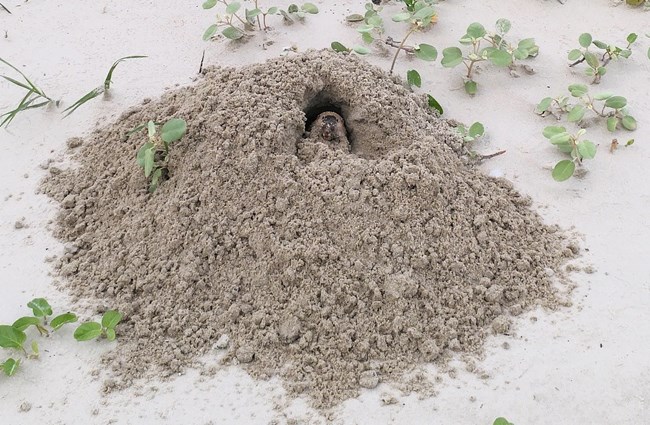
NPS photo by Jamie Kennedy. |
Last updated: November 2, 2018
